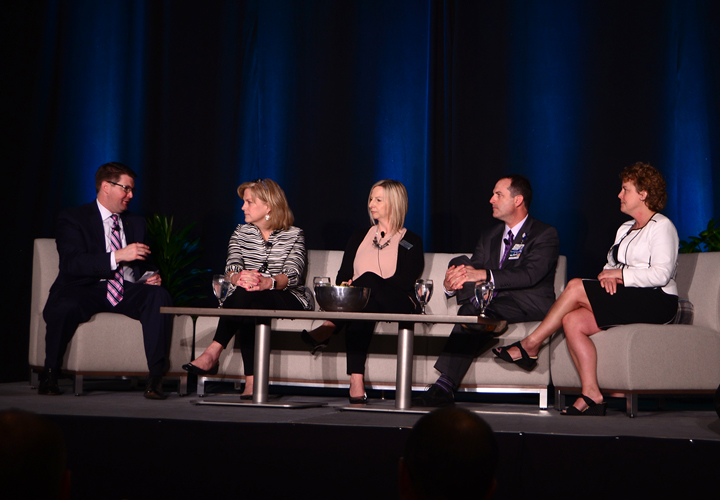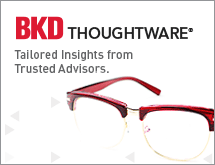Tackling health care challenges through innovation

The health care sector is one of the key drivers of our region’s economy – the industry employs nearly 40,000 people in the Springfield region with more than $1.5 billion in annual payroll. Despite this strength, the need for unique solutions to health care needs and qualified workers is greater now than it has ever been.
That was the theme on March 29 during the Health Care Outlook event at the White River Conference Center, the first in a newly expanded 2017 Outlook Series hosted by the SBDC, the Chamber’s economic development arm. More than 300 attendees listened to a panel of local experts representing health care providers, education and the IT sector about how innovation is helping them meet the challenges facing health care organizations.
All four panelists—representing CoxHealth, Mercy Springfield, Ozarks Technical Community College and IntrisiQ Specialty Solutions—talked about the many ways health care providers are finding more innovative ways to deliver service while improving patient outcomes. It all goes back to addressing the need to keep continually rising costs in check by providing the right care at the right time, including preventive measures whenever possible.
The panelists also acknowledged that workforce needs impacting all job sectors are particularly acute in health care, noting the importance of continued collaboration between providers, health care-related businesses and educators. “Help from OTC is great and programs like GO CAPS are great,” said Scott Rogers, CoxHealth’s system director of performance integration and innovation, who also pointed out the University of Missouri Clinical Campus in Springfield as an example. “These are all important examples of health care working together to grow new talent.”
Dr. Jennifer McNay, a physician and vice president in adult medicine with Mercy Springfield, said health systems have a responsibility to go into schools and educate students about the opportunities that are available. “Maybe they need to hear that our four-year programs may not be appropriate for everyone – there are other options as well,” she said.
Educators are also working proactively to expose students to the industry. Facilities like the OTC Allied Health Simulation Center teach students how to improve patient outcomes by offering practice with extremely lifelike dummies put into simulated real-life medical scenarios.
“We feel it’s incredibly important to work with our community partners—hospitals, paramedics, fire crews, dental offices,” said the center’s director, Michelle Howard. “In the end, 85 percent of our graduates will stay local.”
She also noted the challenge of keeping recent graduates in the health care industry once they are in the workplace; she noted that nationally 35 percent of nursing graduates will leave within the first two years, due to a combination of stress, feeling overwhelmed and lack of strong leadership. “We hope that by simulating stressful scenarios during their training, we can help people feel more qualified and prepared,” she added.
In the end, the name of the game - both for addressing both workforce needs and the continually rising costs of care - is innovation. Kelly Quigg, IntrinsiQ’s director of technical software support, said her company focuses on helping physicians (primarily independent specialty physicians) handle business issues. “We try to find comprehensive solutions so physicians can get the business side out of the way and focus on the services they provide,” she said.

